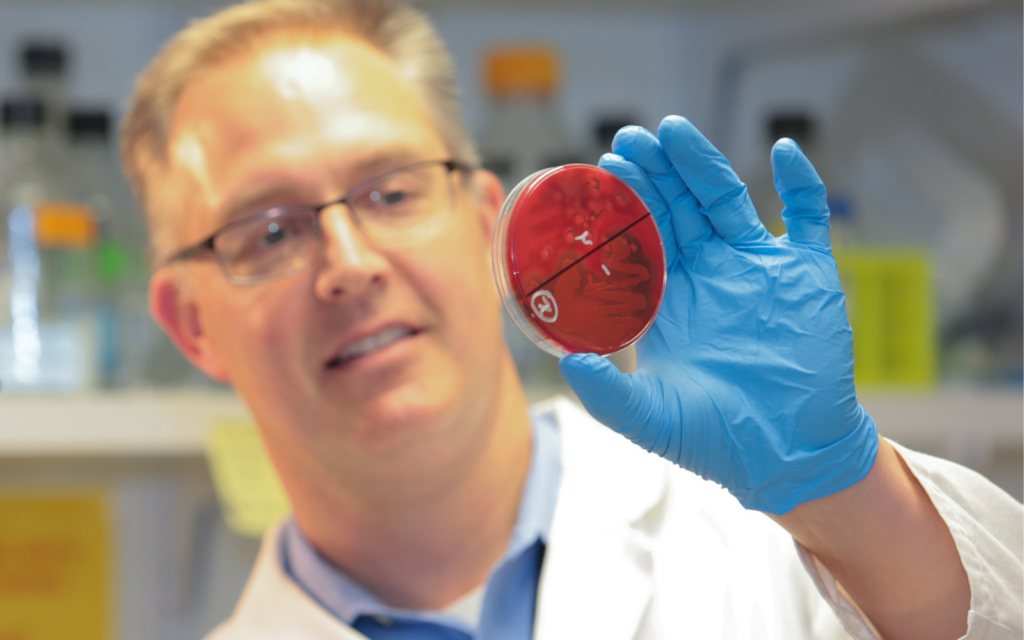Understanding the molecular mechanism that triggers a disease is essential for identifying new treatments. Cholera is no exception.
Recently, an international team of researchers led by Eric Krukonis of the University of Detroit Mercy School of Dentistry revealed for the first time the atomic structure of ToxR, a protein bound to the DNA of two promoters of the genes that control the virulence of Vibrio cholerae, the bacterium that causes cholera.

“The key Vibrio cholerae virulence gene activator ToxR has been studied for years by various laboratories, but how exactly it engages DNA has been a bit of a mystery,” Krukonis said.
Scientists used x-ray diffraction techniques, synchrotron radiation, artificial intelligence and molecular biology to test structurally based DNA-binding hypotheses.
He added that this study demonstrated that the ToxR protein recognizes DNA structure more than it does specific DNA sequences. That information provides some explanation for its “somewhat promiscuous” binding to DNA and provides insights into its role in removing repressor proteins, proteins that turn off or reduce gene expression, from genes required for expression of cholera toxin and other disease-contributing factors until the bacterium enters the host, explained Krukonis, who initiated the research collaboration.
The Detroit Mercy team included ReBUILDetroit scholar Nour El Yaman ’20, Associate Professor Joshua Thomson and Senior Research Laboratory Technician Sarah Plecha. It was funded, in part, through the School of Dentistry’s Faculty Research Grant Program.
They collaborated with researchers led by Miquel Coll at the Institute of Research in Biomedicine (IRB Barcelona) and the Institute of Molecular Biology Barcelona (IBMB-CSIC) in Spain.
“ToxR is a transcription factor, meaning it binds genes and controls their expression,” Coll said. “ToxR activates the toxT and ompU genes causing, among other effects, the production of the cholera toxin. This toxin causes severe diarrhea and consequent dehydration, which can be fatal in a few days if left untreated.”
This study has revealed that ToxR binds to multiple regulatory sequences in bacterial DNA, in tandem or inverted, in turn recruiting RNA polymerase, the molecular machine that transcribes genes.
“What we know is that this transmembrane transcription factor (where part of ToxR is outside the cell and part is inside the cell), receives a signal outside the cell when the bacterium reaches the human intestine, as it detects bile salts, said Albert Canals, first author of the research. “The signal is transmitted inside the cell until it reaches the DNA, thereby triggering expression of virulence genes.”
Cholera is caused by the ingestion of food or water contaminated with the bacillus Vibrio cholerae. Although largely eradicated in developed countries, cholera continues to be a threat to public health in countries with poor sanitary conditions. It is often an indicator of inequality and lack of social development.
In 2022, 29 countries reported cholera cases, among these Haiti, Malawi, Yemen and Syria, which reported large epidemic outbreaks. The increase in cases worldwide has grown in recent years, becoming more widespread and serious due to floods, droughts and massive migration caused by climate change. Armed conflicts and natural catastrophes also limit clean drinking water and facilitate the spread of disease. In 2023, the global resurgence of cholera has sounded the alarm in the World Health Organization and UNICEF.
Krukonis saw the effect of cholera on a community when he visited Kolkata, India, in 2008 during the fall monsoon and flooding season as part of an NIH-organized First Training Mission in Cholera Collaborative Research and Case Management.
“There were so many people coming into hospitals with severe dehydration. That’s when I really started looking into the structure of regulators of cholera toxin expression with the hope of designing targeted therapeutics in the future,” he said.
You can read the research article here.
— By Madeline Byrne.
